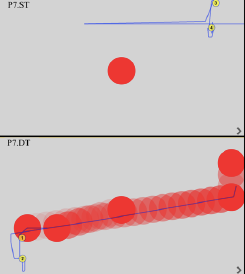Monitoring Eye Movements Depending on the Type of Visual Stimulus in Patients with Impaired Consciousness Due to Brain Damage
Authors: Katarzyna Kujawa, Alina Żurek, Agata Gorączko, Roman Olejniczak, Grzegorz Żurek
Full article: https://doi.org/10.3390/ijerph19106280.
The study was designed to test eye movements under the influence of various visual stimuli in patients after brain damage.
Patients in a state of reduced consciousness may respond differently to various stimuli. However, given that many of them communicate only through eye movements, we were interested in which type of stimulus displayed (static or dynamic) attracts more attention from the patient and how the eyeballs follow these stimuli.
The study was conducted using an eyetracker. It tested which visual stimuli (static or dynamic) elicit more responses in patients in the form of fixations and saccades. The results show that more frequent eye reactions occur when a dynamic stimulus is displayed; moreover, even in patients in the state of non-reactive wakefulness (UWS), numerous fixations and saccadic movements were registered.

Figure 1. ST – static stimulus, DT – dynamic stimulus.
This would indicate that patients whose condition was diagnosed as UWS using behavioral scales may have been in a state of cognitive-motor dissociation, which is characteristic of patients with impaired consciousness, in whom neuroimaging studies show preserved consciousness but no detectable command execution behavior.
For this reason, the commonly used CRS-R scale (Coma Recovery Scale) classifies such patients as UWS.

